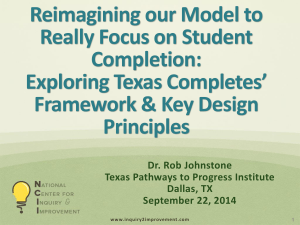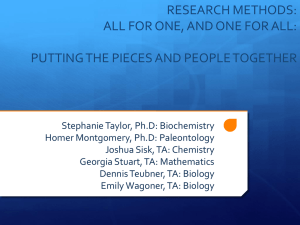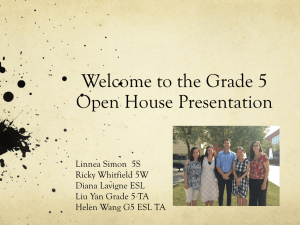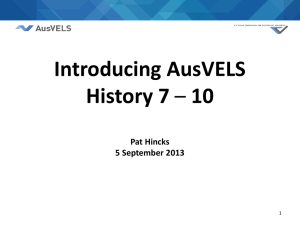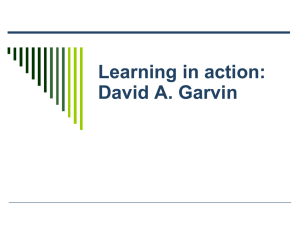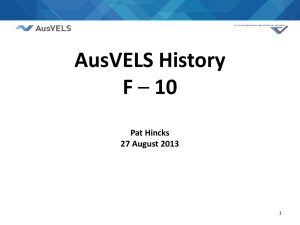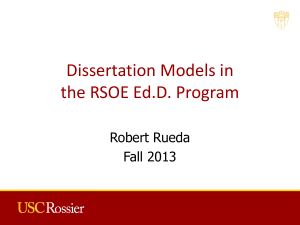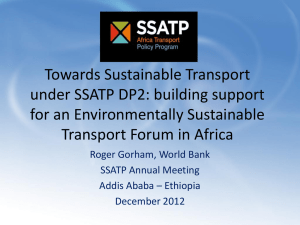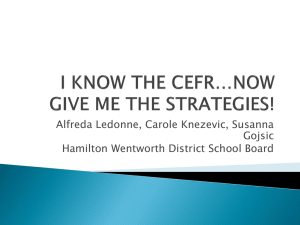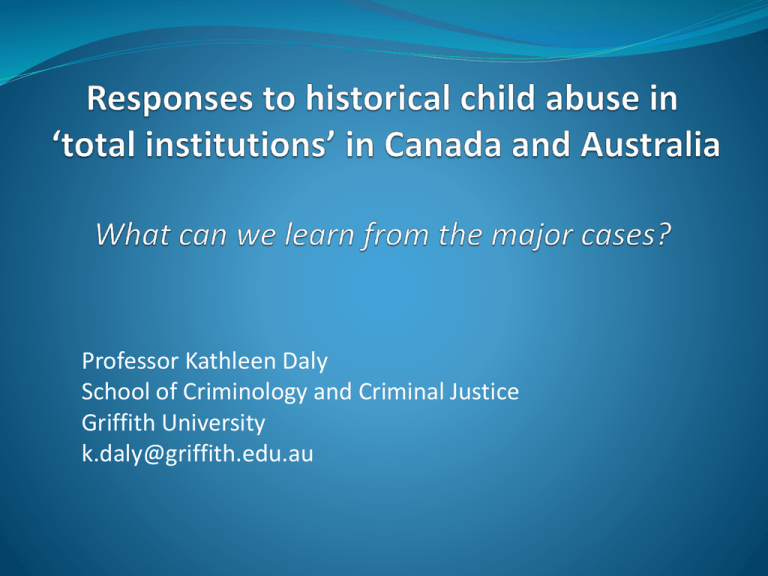
Professor Kathleen Daly
School of Criminology and Criminal Justice
Griffith University
k.daly@griffith.edu.au
Responses to historical child abuse in ‘total institutions’ in Canada
and Australia: What can we learn from the major cases?
Presentation to
Responding to Historical Child Sexual Abuse Forum
University of Sydney Law School
31 May 2013
Data reported are preliminary and subject to change.
Please do not quote or cite without permission of the author.
For further papers see
www.griffith.edu.au/professional-page/professor-kathleendaly/publications
From one case to many
Mt Cashel: the first case, ripple effects, and connections
‘total institution’
‘a place of residence and work where a large number of like-situated
individuals, cut off from the wider society … , together lead an enclosed,
formally administered round of life’ (Goffman 1961)
Drawing out points from Mt Cashel
Study objective
Methods
Challenges
Canadian cases
Mt Cashel (1989 to present), Newfoundland. Inquiry.
Major civil case settlements (N=est 150).
Father Epoch (1990 to about 2005) in remote First Nations
communities, Ontario. Agreement (N=83). Major civil case
settlements (N=est 110).
St John’s and St Joseph’s Schools (1990 to 1998), Ontario.
Agreement (N=950).
Grandview (1991 to 1998), Ontario. Agreement (N=329).
Canadian cases (cont)
Nova Scotia Schools (3) (1991 to 2002). Agreement (N=1,246). Parallel
investigation of staff and payment to those wrongly accused.
New Brunswick Schools (2) (1992-2001). Inquiry. Agreement
(N=345). Parallel investigation of police for alleged cover-up.
Ontario Schools for the Deaf (3) (1991 to 2000). Agreement (N=est
150).
Jericho Hill School (1992-2004), British Columbia. Agreement
(N=365). Civil case settlement (N=350).
Canadian cases (cont)
Alberta sterilisation (4 for mental disabilities) (1996 to 1999). Civil
judgment (Muir). Major civil case settlements (N=900).
Duplessis Orphans (min 26) (1999 to present). Ex-gratia payment
(N=4,169).
Indian Residential Schools (139) (1996 to present). Estimated
13,5000 claims and 11 class actions on eve of Indian Residential School
Settlement Agreement (2006). Agreement (N=78,750).
Australian cases
Stolen Generations (1995 to present). Inquiry. Services (no
payment). Civil judgment (Trevorrow). Est 20,000 to 25,000 affected.
Queensland Institutions (159) (1998 to present). Inquiry. Services
and benefits (Forde Foundation Trust, N=2,222). Ex-gratia payment
(later) (N=7,453).
Child Migrants (52) (2000 to present). Inquiry. Services (no
payment) and benefits (travel). Est 7,000 affected.
Forgotten Australians (334) (2003 to present). Inquiry. Services (no
payment). Est 500,000 affected.
Australian cases (cont)
Tasmanian Institutions (38)(2003 to present). Ombudsman review.
Agreement and services (N=1,685).
South Australian Institutions (56) and APY Lands (2004 to present).
Inquiry. Services. VS apply to Victims of Crime Fund (est N=100); or
alternatively, file civil suits (est N=100 to 150).
Tasmania Stolen Generations Scheme (2006-08). Ex-gratia
payment and services (N=106).
Redress WA Scheme (156) (2007-11). Ex-gratia payment and services
(N=5,345).
Summary points
Case diversity
Canada: 1 to 3 institutions in one province; 1 country-wide and 2
province-wide cases
Australia: 3 country-wide and 5 state-wide cases
Types of outcomes
Three Australian cases have public inquiries only. Most cases have an
Agreement (Canada) or ex-gratia payment (Australia).
Awareness and response
Earlier in Canada (Law Commission of Canada research, 1998-2000)
Time
When did abuse begin and end?
Start year 1899 (when institution opened or policy began)
End year 1987 (when institution closed, policy ended, response began)
How long did it last? 88 yrs
How long did it take the gov’t (or church) to do something about
allegations? (‘response’)
Year of 1st complaint 1960 Year response began 1996
Time taken to respond 36 yrs
Start year of response in Canada (1992) earlier than Australia (2002)
‘Response’: first official recognition
Response type
CA
AU
police investigation & court
prosecution
5
0
public inquiry
1
4
gov’t (church) negotiates or puts
forward settlement package or $
4
4
other (civil judgment only)
1
0
What sparked the response?
CA
AU
press of civil cases
2
0
media stories
3
2
VS group advocacy
1
3
VS complaints to officials
5
1
preceding inquiries
0
2
Outcomes
Cash payment?
yes
NA public inquiry only
16
3
Services or benefits?
yes
NA civil settlement only
16
2
Apologies?
18
yes
What was the payment?
Canada (9 from 7 cases)
$31,600 (median)
Range $ 15,000 to $96,000
Total spent in payments: $3.5 billion CAD (98,000 people)
Australia (6 from 4 cases)
$20,700 (median)
Range $ 7,900 to $65,600
Total spent in payments: $273 million AUD
(18,200 people)
Amounts for payments are adjusted for inflation and reported in
2011 AUD dollars. ‘Total spent in payments’ is not adjusted for
inflation and reported in local currency.
Concluding points
We know about VS experiences in institutions, but less about VS
experiences with justice processes and outcomes.
We know even less about the mindset of gov’t and religious officials
(this is often inferred).
We know VS desire voice, validation, and vindication; but which type
of justice mechanism, alone or together, can best achieve the justice
interests of VS?
Justice trade-offs for VS
Civil litigation: Potentially high vindication, variable/low voice and
validation. Uncertain outcome. Takes longer time.
Public inquiries: Potentially high voice, variable validation, low
vindication. May take shorter time.
Agreement/ex-gratia payment: Variable voice and validation,
potentially low vindication. Greater certainty of financial and support
outcomes. May take shorter time.



